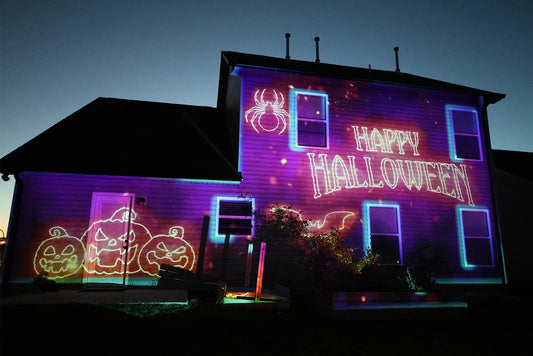Projection mapping has become a popular way to create immersive, visually stunning experiences. From art installations to advertising campaigns, projection mapping is a versatile technique that can transform any surface into a dynamic canvas. But to achieve high-quality projections, you need the right equipment, and that starts with choosing the right projector. In this post, we'll cover some key factors to consider when selecting a projector for projection mapping: lumens, contrast ratio, resolution, and more.
What are Lumens?
Lumens are a measure of brightness. In general, the higher the lumen count, the brighter the image will be. When it comes to projection mapping, lumens are particularly important because they determine how visible your projection will be in different lighting conditions. If you're projecting in a dark room or at night, you may not need as many lumens as you would if you were projecting in a bright, sunlit space.
However, lumens alone aren't enough to ensure a high-quality projection. Contrast ratio is another important factor to consider.
Contrast Ratio vs. Lumens
Contrast ratio refers to the difference between the brightest and darkest parts of an image. A higher contrast ratio means that the image will have more depth and detail, with richer colors and better definition. While lumens are important for brightness, contrast ratio is critical for image quality.
When choosing a projector, it's important to strike a balance between lumens and contrast ratio. A projector with high lumens but low contrast ratio may produce a bright but washed-out image, while a projector with a high contrast ratio but low lumens may not be visible enough in certain lighting conditions.
Resolution
Another key factor to consider when choosing a projector is resolution. Resolution refers to the number of pixels in an image, and higher resolutions generally produce sharper, more detailed images. For projection mapping, a high resolution is particularly important if you're projecting onto a large surface or if you need to display fine details or text.
When selecting a projector, look for a resolution that matches the needs of your project. Full HD (1080p) is a good starting point for most projection mapping projects, but if you're working on a particularly large scale or need ultra-sharp images, you may want to consider a higher resolution, such as 4K.
Choosing a Projector for Projection Mapping
So, how do you choose the right projector for your projection mapping project? Here are a few key considerations:
- Lumens: Consider the lighting conditions of your projection space and choose a projector with a lumen count that matches your needs.
- Contrast Ratio: Look for a projector with a high contrast ratio to ensure good image quality and depth.
- Resolution: Choose a projector with a resolution that matches the scale and complexity of your project.
- Throw Distance: Consider the distance between the projector and the surface you're projecting onto. Make sure the projector's throw distance is appropriate for your needs.
- Portability: Depending on your project, you may need a projector that's easy to transport and set up.
By considering these factors and doing your research, you can choose a projector that will meet your needs and help you create stunning projection mapping experiences.
In conclusion, when it comes to choosing a projector for projection mapping, it's important to consider factors such as lumens, contrast ratio, and resolution. By understanding these key concepts and doing your research, you can select a projector that will help you achieve the desired level of brightness, depth, and detail in your projections.




